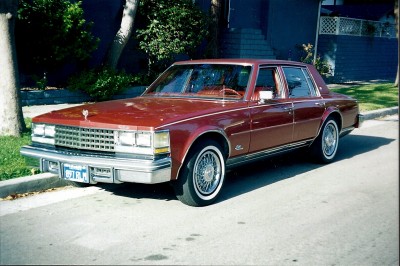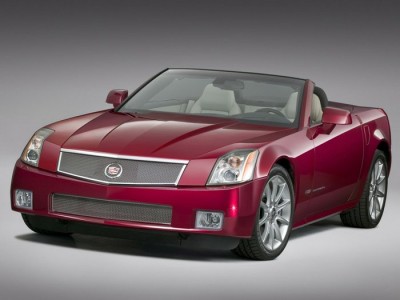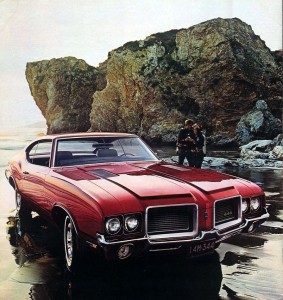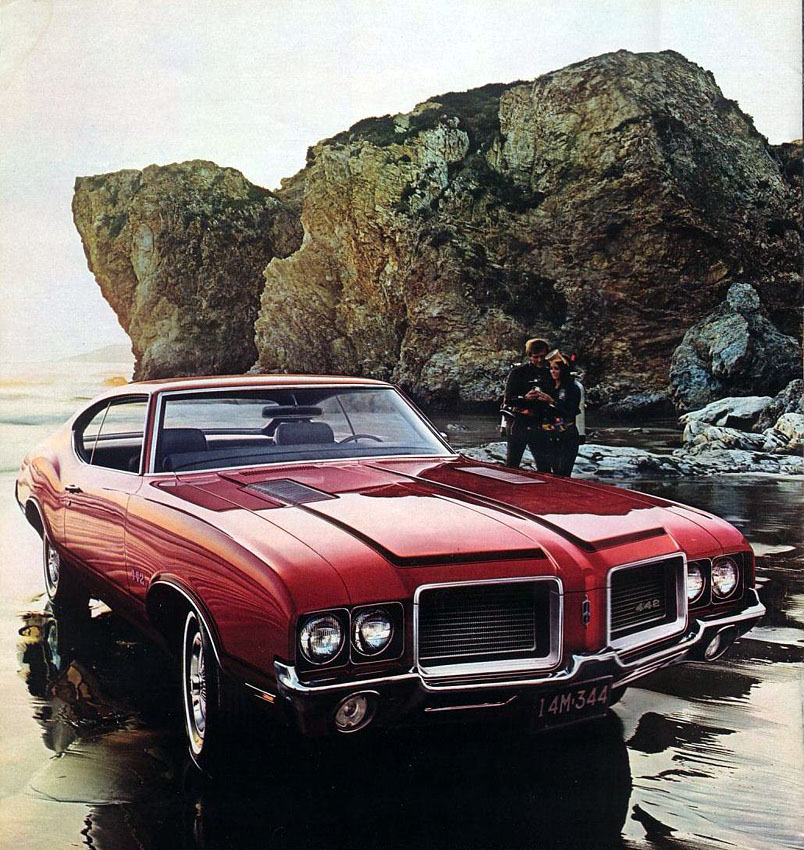Gaywheels contributors choose the cars they’d love to see stage a comeback.
What car do you miss most of all? That’s the question I recently asked of our contributors here at Gaywheels. If they could only pick one car to bring back from the automotive graveyard, what would they choose?
The answers ranged from cargo-hauling Hondas to classic American luxury barges. Interestingly, no one opted for anything truly exotic, a wildly expensive supercar with gullwing-style doors and bigger wings than an Airbus A380. Maybe we’re all exceptionally tasteful…or maybe we’re just really cheap?
Here’s the first leg of our journey down memory lane. Stay tuned for part two tomorrow.

Jeff Stork – 1976-79 Cadillac Seville
Cadillac hit a home run on April 1, 1975, when it introduced the original Seville. The smallest Cadillac in 60 years debuted with the highest base price of any car in the line up and an unprecedented level of standard equipment — including the debut of Electronic Fuel Injection on a Cadillac product. It was a bold attempt by Cadillac to remain relevant in the game, and it was a winner through and through.
Although touted as “International Size”, the Seville paid homage to the silhouette of the Rolls Royce yet remained a Cadillac through and through, with luxurious interior trim, thick carpeting, faux wood trim, and even an instrument panel that was a miniature version of the Cadillac “Space Age” panel. The exterior was Detroit all the way with a padded vinyl roof, generous applications of chrome trim, a downsized version of Cadillac’s famous egg crate grille, and the widest whitewalls of any production car on the road. Color and trim were done in Cadillac style as well, with fourteen exterior colors, eleven vinyl roof choices, eight colors of leather, seven choices of cloth, and even nine choices for accent striping. No European choice had such a varied color palette.
A gamble that paid off, the little jewel box sold 43,772 copies in its first model year and established itself as a viable alternative to the imports. Sales remained strong through the end of the first generation in 1979, with sales peaking in 1978 at 56,985 units. The styling changed dramatically in the second generation and beyond, but the charm and cachet of the original has never been equaled. If you see one today, it will stand out in traffic for its timeless good looks.
 Will Cheval Jr. – 2004- 2009 Cadillac XLR
Will Cheval Jr. – 2004- 2009 Cadillac XLR
My choice for resurrection would be the Cadillac SLR. Constantly compared to the Corvette, the XLR had a one-model lifespan, with only a few minor tweaks along the way. Seen primarily as Cadillac’s flagship roadster, the XLR had a retractable hardtop that made the two-door stunning — whether it was topless or not.
Still today, the XLR is a head-turner with its sharp lines, and Cadillac’s “arts and science” design attitude. Next to Mercedes-Benz SL-class and BMW’s z4 roadsters, the XLR always stood out and was truly American luxury. To me, the SLR was the rogue from the heartland that never wanted to blend in. Nowadays, it’s rare to come across an XLR or spot one driving, yet when I do, it still takes my breath away.
 Joe Tralongo – 1961-1969 Lincoln Continental and Oldsmobile division
Joe Tralongo – 1961-1969 Lincoln Continental and Oldsmobile division
Call me old fashioned, but there was something about America in the 60s that no longer exists today. Amid all the political strife and social inequality, there was also elegance about America. It was a time when people wore suits to get on an airplane, and European culture was something to be admired, not shunned. During this time, one of the greatest American luxury names produced what may be the finest motorcar of the 60s: The 1961-69 Lincoln Continental. From its slab-sided simplicity to its unique suicide doors, the Continental shunned the overt excess of the 50s and made a new statement about American style and prestige.
The quintessential American luxury car for almost a decade, the Continental marched into the 70s retaining its basic shape, but picking up a few more flamboyant attributes. Nevertheless, the 75-79 Continental remained resplendent, offering no less than 19 different exterior color choices and 15 different interior color combinations. Today, a luxury car buyer is lucky if he or she is given a choice of four interior hues, usually some form of black, beige, gray or red. If Lincoln were to do it right, the Continental could be the American equivalent of the Audi A8 or Mercedes S-Class. But, the industry seems to shun every part of its past, even as younger Americans flock to older Lincoln products (I need only point out the car driven in the popular series Entourage). Are you listening, Mr. Mulally?
 My second choice wouldn’t be a car, but a division. Oldsmobile had the best selling car in America in 1977, the Cutlass, and yet a mere three decades later, the brand’s lifeline was severed by a shortsighted team of corporate bunglers. Great names like the 442, Cutlass, Toronado, Vista Cruiser and 98 Regency were family favorites spanning generations. In a world of clone cars and look-a-likes, the Oldsmobile name and lineup would make a brilliant addition to GM. While I was at it, I’d bring back all the old designers, like my friend Blaine Jenkins, to teach the youngsters a thing or two about design. Color, fabric, sew patterns and whimsy are the ingredients of the cars we now call classics. I’ll take my Regency in hardtop form with a big V8 and split bench seat!
My second choice wouldn’t be a car, but a division. Oldsmobile had the best selling car in America in 1977, the Cutlass, and yet a mere three decades later, the brand’s lifeline was severed by a shortsighted team of corporate bunglers. Great names like the 442, Cutlass, Toronado, Vista Cruiser and 98 Regency were family favorites spanning generations. In a world of clone cars and look-a-likes, the Oldsmobile name and lineup would make a brilliant addition to GM. While I was at it, I’d bring back all the old designers, like my friend Blaine Jenkins, to teach the youngsters a thing or two about design. Color, fabric, sew patterns and whimsy are the ingredients of the cars we now call classics. I’ll take my Regency in hardtop form with a big V8 and split bench seat!

Loved the SLR! Dont know why Cadillac dropped it. Agree its similar to Corvette, but GM is king of platform sharing!
I agree, the Seville was a beautiful model. Remember the ones with the bustle trunk?
I miss the gargantuan 1978 and 1979 Lincoln Town Cars a former partner and I owned years ago, although I’d hate to have to fill one up regularly these days. The ’78 with a 460 actually got a little better mileage than the ’78 with the 400 cubic inch engine. One was black with a silver landau roof and plush black velour interior. The other was a buckskin tan with matching landau roof and velour interior. Both were Cartier editions. The oval opera windows gave the cars such an elegant look; totally unnecessary, but beautiful nonetheless.
These days I drive a 1992 Buick Roadmaster Limited sedan that I literally pulled from a line of junkers and have made whole again. I’ve owned several European makes over the years as well, but I keep coming back to the big, gaudy, comfortable American sedans because parts are plentiful and I can work on them.
Thanks for a great trip down memory lane!
I’ve always owned and driven Rolls-Royces, but in fact had a 1979 Seville that I bought for my business and kept for twenty years. I bought it as a dealer demonstrator with 1500 miles, when Cadillac had just introduced the 1980 models. It was finished in Western Saddle Firemist with Saddle coachlines and a Saddle metallic vinyl roof, and was trimmed in Antique Saddle hide. Happily, it didn’t have the opera lamps, which I thought rather spoilt the clean look of the car. I kept the car meticulously maintained and drove it for 137,000 miles before selling it to an enthusiast who drives and cares for it still. What a wonderful and charming car, and a pleasure to drive! In my opinion, Bill Mitchell’s design for the first generation Seville was a real masterpiece, and it has aged well and gracefully. Thanks so much for this delightful post of a fondly-remembered car that had terrific style, and was indeed a “jewel box”.